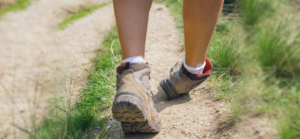COMMON CONDITIONS
Ligament Injury Ligament Injury Types & Treatment at RICHARDSON, DALLAS, GARLAND, WYLIE, MURPHY, TX
What are ligament injuries?
Before defining the ligament injury, one must know what ligaments hold together. Ligaments are the fibrous tissues that support and connect the bones. The ligaments are strong as well as flexible. Their support is vital for the proper movement of joints. Overall, the ligaments hold the joints together for their effective and easy movement.

The foot and ankle are composed of several ligament and tendon complexes. Ligament injury happens due to the ligament tear. It happens when an external excessive weight or any unwanted sudden movement take place. This excessive activity or pressure is more than the internal withstanding forces. Hence the ligament is damaged causing the ligament injury. Mostly of the ligaments of the foot and ankle can be prone to injury.
There are different forms of ligament injuries. Some of common ligamentous injuries include:
Ankles Sprain:
An ankle sprain occurs when the strong ligaments that support the ankle stretch beyond their limits and tear. Ankle sprains are common injuries that occur among people of all ages. They range from mild to severe, depending upon how much damage there is to the ligaments.
Turf Toe:
Turf toe is a sprain of the big toe joint resulting from injury during sports activities. The injury usually results from excessive upward bending of the big toe joint. The condition can be caused from either jamming the toe or from repetitive injury when pushing off repeatedly when running or jumping. Although this injury is most commonly reported in football players, participants in soccer, basketball, wrestling, gymnastics and dance also are at risk.
Lisfranc Injuries:
The Lisfranc joint is the point at which the metatarsal bones (long bones that lead up to the toes) and the tarsal bones (bones in the arch) connect. The Lisfranc ligament is a tough band of tissue that joins two of these bones. Injuries to the Lisfranc joint most commonly occur in automobile accident victims, military personnel, runners, horseback riders, football players and participants of other contact sports, or something as simple as missing a step on a staircase. Lisfranc injuries occur as a result of direct or indirect forces to the foot. A direct force often involves something heavy falling on the foot. Indirect force commonly involves twisting the foot.
Treatment of Ligament Injury:
The ligament injury needs to be treated as early as possible for your full participation in daily life. The treatment methods include non-surgical and surgical.
Firstly we will describe the non-surgical methods which prove to be effective for the treatment. These methods are:
- Immobilization is crucial in this injury. The damaged muscle should be given time for heeling. Rest will automatically give the injury due time to recover.
- Icing on the inflamed and ruptured area of the knee or elbow. With reduction in inflammation, the muscles get relaxed and the pain decreases.
- Physical therapy with some exercise may also improve the condition; these exercises are light in nature and involve compression and elevation techniques.
- A support is also used for keeping the joint intact. The cast keeps the ligament in position and heeling starts.
- Medications which reduce the inflammation are also useful for the treatment of ligament injury.
In case of severe injuries, surgical treatment becomes unavoidable. One of the most common methods of surgery is repair of the damaged ligament.
Regardless of if a non-surgical approach or a surgical is recommended, timely treatment is required. Early treatment allows you to recover quickly and get back on your feet.
Ligament Injury Ligament Injury Types & Treatment at RICHARDSON, DALLAS, GARLAND, WYLIE, MURPHY, TX
Dr. Raymond Delpak works with patients to determine the best course of action for treating foot and ankle problems. We use the most advanced techniques possible. If you would like to learn more, please visit us TX Foot and Ankle Consultants or schedule an appointment.
SUBSCRIBE TO OUR NEWSLETTER
*for updates on our medical equipment only

